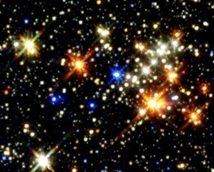Stars and the other celestial bodies
The night sky we see is full of wonderful objects. Some are visible with the naked eye while some are not. Astronomers study various objects in the night sky.
This concept explaination will introduce the learners to the common heavenly bodies.
After reading the concept, students will be able to:
- Understand the meaning of a star.
- State what is a constellation.
- Define meteors and meteorites.
- Identify a comet in the night sky.
- Name the constellations looking at their pictures.
Each concept is explained to class 1 students using descriptions, illustrations, and concept maps. After you go through a concept, assess your learning by solving the two printable worksheets given at the end of the page.
Download the worksheets and check your answers with the worksheet solutions for the concept Stars constellations and celestial bodies and the Planet provided in PDF format.
What are Stars?
- Stars are luminous astronomical objects that constantly emit heat and light.
- Stars are made with gaseous components.
- We can see many twinkling stars through our naked eyes in the night sky.
- The Sun is the closest star to Earth.

Stars Around Us:
a) Sun:
- It is a hot ball of glowing gases.
- The Sun is situated at the centre of the solar system.
- The Earth and all other planets belonging to the solar system revolve around the Sun.
- Sun gives us heat and light necessary for the existence of life on Earth.
- In many cultures, the Sun is considered an important deity because of its massive importance.
_20250130_121735.jpeg)
b) Pole Star:
- The Pole star appears like a stationary star in the sky at night.
- This star can be seen in the night sky in the North direction.
- Pole star is called Dhruv Tara in Hindi.
- We cannot see the Pole star from the southern hemisphere.
- In the past, the sailors used to locate the north with the help of the Pole star.
_20250130_121824.jpeg)
c) Constellations:
- Constellations are a group of stars that can make recognisable patterns in the night sky.
- These groups of stars might take the shapes of animals, objects, or people.
- In many instances, they are named after mythological figures of the ancient world.
- Constellations are used in astronomy, navigation, and storytelling.
- Constellations can be seen through telescopes.
_20250130_122001.jpeg)
The different constellations are briefly described below—
i) Orion Constellation:
- This constellation is clearly visible in the night sky.
- Orion is named after a famous Greek mythological character known by the same name.
- In the middle, it has a set of three stars, and if we join those, they look like a belt; hence is known as Orion’s belt.
_20250130_122035.jpeg)
ii) Ursa Major Constellation:
- This constellation has many names like Plough or the Big Dipper, and Great Bear.
- In India, this constellation is called Saptarishi.
- This constellation points towards the North Star.
- In the past, this constellation helped people navigate the northern hemisphere.
- This constellation is made of seven bright stars.
- It looks like a big dipper if we join all the stars with a line.
_20250130_122112.jpeg)
iii) Pegasus Constellation:
- This constellation is named after the Greek mythological character that looks like a winged horse.
- It consists of a square set of four stars and with other stars surrounding that square.
- This constellation is attached to another constellation called Andromeda.
- Except for the square, other parts of this constellation appear fuzzy in the night sky.
_20250130_122223.jpeg)
iv) Canis Major Constellation:
- This constellation represents the figure of a dog in the night sky.
- It has Sirius, which is the brightest star in the night sky.
- This constellation is visible in the northern hemisphere during winter and in the southern hemisphere during summer.
_20250130_122252.jpeg)
Celestial Bodies:
The heavenly bodies that are present in the universe are called celestial bodies.
Different Celestial Bodies Up In The Sky:
a) Planets:
- Planets do not emit light and heat like stars. They reflect the light of the Sun.
- These are large celestial bodies moving around the Sun in fixed paths.
_20250130_122359.jpeg)
b) Satellites:
- Satellites are heavenly bodies revolving around the planets.
- They also do not emit light and heat like stars.
- Satellites always revolve in a fixed orbit.
_20250130_122436.jpeg)
c) Comets:
- Comets are small celestial objects that revolve around the Sun.
- They look like fireballs with long tails in the night sky.
- Comets are only visible when they come close to the Sun.
_20250130_122659.jpeg)
d) Meteors and Meteorites:
- Meteoroids are celestial bodies revolving around the Sun in different orbits.
- If they come out of the orbit, they fall towards the Earth’s surface, catch fire, and are called meteors.
- Meteors may vary in size. If some of their remains reach the surface of the Earth without burning completely, they are considered meteorites.
_20250130_122735.jpeg)
New Words:
Luminous: Something that possesses the light of its own.
Deity: A god or goddess.
Stationary: Something that does not move.
Atmosphere: A layer of gas mixture surrounding the Earth.
Dipper: A scoop or a ladle.
Did You Know?
- Next to the Sun, Proxima Centauri is the closest star to Earth.
_20250130_122759.jpeg)
- At present, we know about 88 constellations.
- Asteroids are a type of celestial bodies that are present between the planets Mars and Jupiter.
_20250130_122821.jpeg)
_20250130_122859.jpeg)

